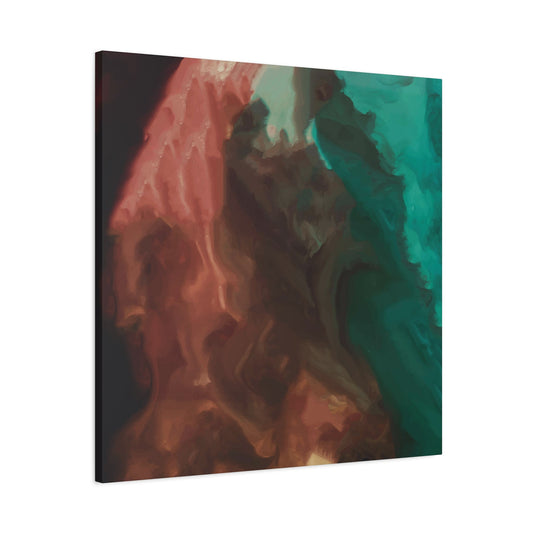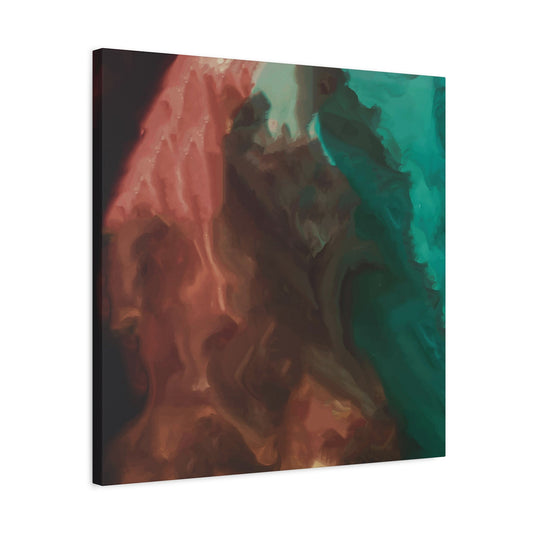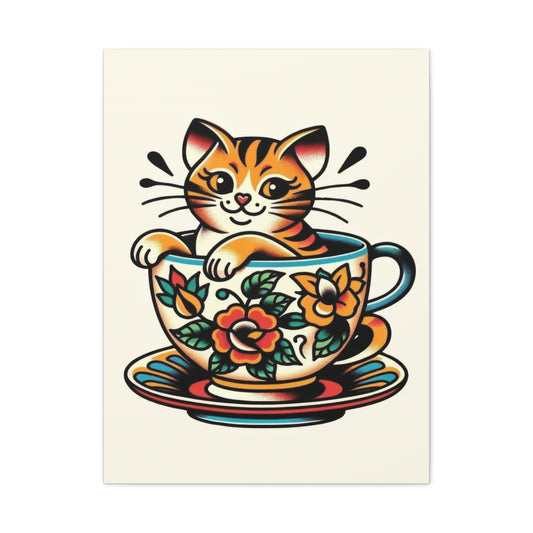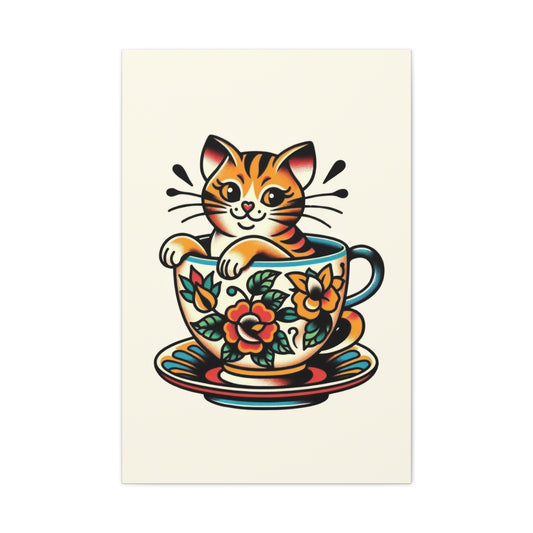Creating a playroom that is both functional and stylish is not as difficult as it may seem. With the right wall art, you can elevate your child’s play space into something truly special. Not only does artwork add a touch of personality and fun, but it can also serve as an educational element in your playroom design. Here are some expert tips to help you choose the best wall art for your child’s play area.
Personalizing Your Playroom: Creating a Space That Reflects Your Child's Interests
Designing a playroom for your child is a unique opportunity to create a space that fosters imagination, creativity, and comfort. A playroom should feel like a sanctuary where your child can explore their interests, play freely, and develop their sense of self. One of the most effective ways to make a playroom feel personal and inviting is through wall art that reflects your child’s personality and passions. By curating artwork that speaks to their current interests, you not only make the room more visually appealing but also help it become a space where they feel truly at home.
Incorporating wall art that mirrors your child’s hobbies, favorite animals, or characters helps infuse the space with a sense of joy and individuality. If your child is old enough to have a favorite animal or hobby, use custom wall art that showcases these interests, making the space feel more personal. For younger children, opt for artwork that is visually stimulating, such as colorful world maps, underwater scenes, or vibrant illustrations from their favorite storybooks. These art pieces will not only engage their imagination but will also help them learn and grow.
In this article, we will delve deeper into how to personalize your child’s playroom through thoughtful and imaginative wall art choices. We will explore how to use wall art to enhance the space’s function, reflect your child’s ever-changing interests, and create an inviting and stimulating environment that encourages play and creativity.
|
Related Catagories: |
The Power of Personalization in a Playroom
Personalization is key when it comes to designing a space where children spend a significant amount of time. A playroom is more than just a place for toys and games—it’s a place for exploration, learning, and self-expression. When a room feels personal and reflects a child’s unique preferences, it can become a place where they feel more connected, comfortable, and inspired.
Incorporating wall art into your child’s playroom is one of the simplest yet most impactful ways to personalize the space. Wall art has the ability to completely transform a room, setting the mood and creating a focal point around which other elements of the décor can revolve. Whether it’s a piece of art featuring their favorite animal, a world map that sparks curiosity, or an illustration from a beloved storybook, the right artwork can infuse the playroom with energy and vibrancy.
The benefits of personalized wall art extend beyond aesthetics. Artwork that resonates with your child can also encourage learning and development. For instance, a world map or alphabet poster can serve as an educational tool, helping them learn about geography or letters while also contributing to the room’s visual appeal. Similarly, artwork featuring animals, nature scenes, or whimsical designs can help stimulate your child’s imagination and curiosity, encouraging them to explore and create.
Reflecting Your Child’s Interests in Wall Art
One of the best ways to personalize a playroom is by incorporating wall art that reflects your child’s specific interests. As children grow, they often develop strong preferences for certain hobbies, animals, or characters. Whether your child is obsessed with dinosaurs, loves exploring outer space, or has a passion for ballet, these interests can be reflected in the artwork you choose for their playroom.
For older children who have specific hobbies or favorite subjects, consider custom wall art that showcases these passions. If your child is into sports, a custom painting of their favorite sport or athlete could add a personal touch to the space. Alternatively, if your child loves animals, a framed print of their favorite animal—be it a tiger, elephant, or penguin—can create a captivating focal point. Custom art allows you to tailor the décor to their specific preferences, making the playroom feel even more special.
For younger children, artwork can reflect broader themes, such as animals, nature, or adventure. A playful print of woodland creatures or jungle animals can make the room feel whimsical and fun. Bright and colorful abstract art can also stimulate a young child’s imagination, encouraging them to explore different shapes, colors, and patterns. Incorporating art that represents what your child loves helps make the playroom a space that’s truly their own—a room where they can relax, play, and learn in an environment that speaks to their interests.
Stimulating Visual Art for Younger Children
For younger children who may not have specific interests or preferences yet, wall art that stimulates their senses is a great choice. At this stage, children are often fascinated by bright colors, bold shapes, and whimsical imagery. The right artwork can engage their attention, encourage creativity, and enhance their cognitive development.
One excellent option for younger children is colorful world maps or educational posters. A vibrant map of the world, complete with illustrations of animals, landmarks, or cultural symbols, can serve as both a learning tool and a visually stimulating piece of art. Children can explore the map, ask questions about different countries, and become familiar with the world around them. This type of art not only sparks curiosity but also helps lay the foundation for future learning.
Underwater scenes or nature-inspired art can also captivate young children’s imaginations. Brightly colored sea creatures, playful fish, or underwater landscapes can make the room feel lively and full of wonder. These scenes can also create an inviting, calming atmosphere that’s perfect for relaxation or storytelling.
Illustrations from favorite storybooks are another fantastic way to personalize a playroom for younger children. Art featuring beloved characters or scenes from their favorite books helps create a space that feels familiar and comforting. Whether it’s a scene from The Very Hungry Caterpillar, Where the Wild Things Are, or Peter Rabbit, these illustrations make the room feel like a magical extension of the stories they love. Storybook art adds a sense of nostalgia and warmth to the playroom, helping young children feel more at home in their space.
Creating a Harmonious Atmosphere with Colorful Wall Art
Color is a powerful tool in home décor, and it plays a crucial role in setting the tone of a room. In a playroom, colorful wall art can be used to create an environment that feels joyful, energizing, and fun. However, it’s important to strike the right balance when using color. Too much color can overwhelm the space, while too little may make it feel dull or uninspiring.
To create a harmonious atmosphere, start with a neutral or soft color for the walls, such as light gray, soft beige, or pastel tones. This neutral base allows the colorful wall art to stand out without making the room feel too busy or chaotic. From there, you can add colorful art pieces in varying shades to bring energy and vibrancy to the room. Consider a mix of bold colors—such as sunny yellows, bright blues, and playful pinks—that work well together while also reflecting your child’s personality.
To enhance the sense of balance, you can pair vibrant art with simple furniture and accessories. Light-colored furniture, such as white or light wood shelves, tables, and chairs, can create a clean and organized look while allowing the artwork to be the focal point. Soft fabrics for cushions, blankets, and rugs in complementary colors can also tie the space together and help create a cozy, inviting atmosphere.
Personal Touches: Making the Playroom Truly Yours
The beauty of decorating a playroom is the ability to make it truly unique and reflective of your child’s personality and growth. Personal touches, such as custom artwork, family photographs, or hand-made crafts, can further enhance the room’s sense of individuality. Adding elements that reflect your child’s journey and experiences makes the space feel more personal and inviting.
Consider including framed photographs of your child’s milestones or family moments. These photos can be displayed alongside their favorite artwork, creating a space that feels both personal and warm. Handmade crafts, such as painted handprints, can also be incorporated into the décor to make the space feel even more special. These personal touches add depth and character to the room, making it a place where memories are created and cherished.
Another way to personalize the playroom is by creating a rotating art display. As your child’s interests evolve, you can swap out older artwork for new pieces that reflect their current passions. This keeps the space fresh and exciting, while also giving your child the opportunity to curate their own space as they grow and change.
Where to Find Personalized Wall Art for Your Playroom
When it comes to finding personalized, high-quality wall art for your child’s playroom, Wallart offers a wide range of options to suit every taste and interest. Whether you’re looking for custom pieces featuring your child’s favorite animals, storybook illustrations, or vibrant world maps, Wallart provides a variety of designs that can help turn your playroom into a colorful, inspiring space.
With a focus on quality and personalization, Wallart’s collection includes artwork that’s perfect for both young children and older kids. You can choose from a variety of sizes, framing options, and styles, ensuring that you find the perfect piece of art for your child’s playroom. Whether you’re looking for educational prints, whimsical illustrations, or abstract designs, Wallart has something for everyone.
Expert Tips for Creating the Ultimate Kid-Friendly Playroom
Designing a kid-friendly playroom is one of the most exciting yet challenging tasks for parents and caregivers. A playroom is where children spend a significant amount of their time, engaging in activities that help them grow, learn, and develop their creativity. As children’s needs and preferences evolve, it’s essential to design a space that not only looks fun and inviting but also promotes comfort, safety, and exploration. Elimar Lobo Sáenz, an interior design expert, offers some great advice to create a space that works for both parents and children. By focusing on comfort, functionality, and imaginative elements, you can transform any space into a kid-friendly playroom that fuels creativity and offers a safe, comfortable place for play.
Elimar emphasizes the importance of ensuring that the playroom includes a comfortable area rug, particularly since kids spend a significant amount of time on the floor while playing and exploring. Rugs provide a cozy, soft surface for lounging, building forts, and playing games. Additionally, low furniture, poufs, ottomans, and cushions help create a welcoming environment that’s both fun and safe for little ones. These elements make the space accessible for children of all ages, ensuring they can interact with their environment comfortably and without obstacles.
In this article, we’ll explore more pro tips for designing a playroom that’s both functional and fun. We’ll cover the essentials like furniture, storage solutions, and wall art that transform a simple room into a magical space for children. Whether you’re designing a playroom for toddlers, school-aged kids, or older children, we’ll provide ideas to help you make the most out of every square inch. By combining practical elements with imaginative décor, your child’s playroom will be both a safe haven and an inspiring space for creativity and play.
Creating a Comfortable and Safe Play Area
One of the first considerations when designing a playroom is comfort. Elimar Lobo Sáenz points out that kids spend a lot of time on the floor, whether they’re playing games, reading books, or engaging in other activities. Therefore, a comfortable area rug is an essential piece of furniture that should not be overlooked. Area rugs not only help soften the floor but also provide a designated space for activities. The texture and material of the rug play a big role in how comfortable the space feels. Opt for rugs made from soft, durable materials like cotton, wool, or polyester to ensure they’re easy to clean and provide a cozy feel for kids.
The size and shape of the rug are also important factors to consider. A large rug is ideal for defining the play area and giving children ample space to spread out and engage in different activities. If you want to add a playful touch, consider rugs with fun patterns or educational designs, such as a world map or an animal motif. These types of rugs not only provide comfort but also offer learning opportunities for younger children.
Besides area rugs, consider including low furniture pieces that are specifically designed for kids. Low tables, chairs, and storage units make the space more accessible and safer for younger children. Low furniture allows children to move around freely, sit comfortably, and interact with their environment without the need for adult assistance. Soft ottomans, poufs, and cushions are also great additions to the room, offering extra seating while maintaining a relaxed and cozy atmosphere. These pieces encourage lounging, storytime, or quiet play, making them perfect for both active play and relaxation.
Utilizing Flexible, Multi-Functional Furniture
In a playroom, maximizing space and ensuring that the room remains tidy is key. One way to achieve this is by selecting multi-functional furniture that can serve multiple purposes. Storage is especially important, as it helps keep toys, books, and games organized and off the floor, making the space feel less cluttered.
Furniture like storage ottomans or benches with hidden compartments are a great way to keep toys and accessories out of sight while still providing seating or additional play surfaces. Stackable stools or tables can be rearranged as needed, giving you flexibility to adapt the space for different activities. Foldable or modular furniture is also an excellent choice, as it can be easily adjusted or stored when not in use, allowing for more space to play or accommodate guests.
By incorporating furniture with built-in storage, you can ensure that the room remains organized and functional. For instance, toy storage bins, baskets, or shelving units help keep things in order while still being easily accessible to children. Storage solutions that blend seamlessly with the playroom’s décor allow the space to feel cohesive and neat. The right furniture choices can enhance both the aesthetic and practicality of your playroom, ensuring it stays tidy while still being a fun and inviting place for your kids.
Adding Personality with Wall Art
When it comes to decorating your playroom, wall art is one of the easiest and most impactful ways to personalize the space. Wall art not only adds visual interest and color to the room, but it can also reflect your child’s interests and passions. From vibrant and playful designs to educational art, there’s a wide variety of wall art options that can transform your playroom into a magical space.
For younger children, artwork with bright colors, fun shapes, and whimsical themes can engage their imagination and bring a sense of joy to the space. Wall art featuring animals, nature scenes, or playful illustrations from favorite storybooks can spark curiosity and creativity. You can also incorporate educational posters, such as alphabet charts or world maps, which can help foster early learning while enhancing the room’s visual appeal.
As your child grows and their interests evolve, consider switching out the artwork to reflect their changing tastes. If they develop a love for dinosaurs, outer space, or sports, you can add custom wall art that features these interests, creating a space that feels personal and special to them. Wall art featuring motivational quotes, positive affirmations, or inspiring images can also encourage a positive mindset and motivate them to dream big.
Custom wall art is an excellent way to make the space feel unique. Personalized artwork, such as a custom print with your child’s name or a favorite quote, can make them feel more connected to their space. This also adds an extra level of charm and character to the room, turning it into a space that truly feels like their own.
Wallart offers an extensive collection of prints, from playful designs for toddlers to more sophisticated and educational pieces for older children. Whether you want to showcase vibrant colors, whimsical designs, or inspiring quotes, Wallart has the perfect pieces to help you personalize the space and create an atmosphere that reflects your child’s unique personality.
Creating a Playroom That Grows with Your Child
One of the great advantages of designing a playroom is that it’s a space that can grow and evolve as your child gets older. What starts as a whimsical and colorful room for toddlers can later be transformed into a more functional and mature space as your child develops new interests and needs.
When designing your playroom, consider choosing elements that can easily adapt to your child’s changing preferences. Opt for furniture that is adjustable or can be repurposed as your child grows. For example, a low, kid-sized table can later become a study desk, and soft poufs can double as additional seating for playdates as your child ages. Choosing neutral-colored walls and large storage units can ensure that the space remains versatile enough to accommodate various activities, from early childhood play to teen hobbies.
To make the playroom a space that truly grows with your child, invest in wall art and décor that can evolve over time. Wall art that reflects their current interests can be swapped out as their tastes change. By keeping the décor flexible and adding new pieces as needed, you ensure that the playroom stays fresh, inspiring, and relevant to their evolving passions.
Wallart: A Great Resource for Kid-Friendly Wall Art
If you’re looking for high-quality, personalized wall art for your playroom, Wallart offers a diverse selection that caters to every child’s interests and age group. From playful, colorful prints for toddlers to educational and motivational designs for older children, Wallart’s collection provides endless options for transforming your playroom into a space your child will love. The high-quality materials ensure that your art pieces will last for years, standing up to the wear and tear of a busy playroom.
Wallart’s customizable options allow you to tailor the artwork to your child’s personality, creating a truly unique and meaningful space. Whether you’re looking for something whimsical, educational, or inspiring, Wallart has the perfect pieces to bring your playroom vision to life.
Playroom Wall Art: Shapes and Layouts
When choosing the right artwork, it’s essential to consider the shapes and layout of the pieces to complement your room. Here are a few design suggestions to help you create the perfect visual:
-
The Classic Canvas: Choose from a single-panel rectangle or square canvas for a timeless look.
-
The Vertical Canvas: For a more striking effect, opt for a single-panel vertical canvas.
-
The Panoramic Canvas: Horizontal or panoramic canvas prints create a sense of openness and are great for larger spaces.
-
The Trendy Multi-Panel Canvas: Consider a triptych or five-panel symmetrical design for a modern, artistic statement.
-
The Unique Layout: A split two-piece canvas or a seven-piece hexagonal canvas set will add a creative touch to your child’s space.
Each of these canvas shapes offers something different, and with the right combination, you can build an inspiring and fun environment for your child.
Framed vs. Unframed Art: Choosing the Best Option for Your Playroom
When designing a playroom, one of the key decisions you’ll face is choosing between framed or unframed artwork. Both options have their advantages and drawbacks, and the right choice will depend on your specific needs, aesthetic preferences, and how you envision the playroom’s overall vibe. Wall art plays a crucial role in personalizing and adding character to a space, and how you display it can significantly impact the ambiance and durability of your design.
|
Related Catagories: |
In this article, we will explore the practicalities and stylistic differences between framed and unframed artwork, helping you make an informed decision that suits your playroom’s environment. Whether you prefer the polished, protective quality of framed art or the sleek, modern look of unframed pieces, understanding the pros and cons of each option will ensure that your playroom remains both beautiful and functional.
The Advantages of Framed Artwork
Framed artwork has long been a popular choice for many interior design styles, and for good reason. The framing adds structure, style, and protection to the artwork, making it an ideal choice for a space like a playroom, where the potential for mess and wear is high. There are several key benefits to choosing framed artwork for your playroom:
1. Protection from Damage
One of the primary advantages of framed art is its protective quality. In a playroom, especially with younger children, the artwork is more susceptible to being touched, bumped, or even smudged with sticky hands. A frame provides a protective barrier that keeps the artwork safe from dust, dirt, and accidental damage. It also helps preserve the integrity of the art for years to come, allowing you to maintain its vibrancy and quality.
Framed artwork is particularly useful in homes with active children who may interact with the artwork more frequently. A frame not only acts as a barrier against physical damage but can also prevent the art from fading, keeping it looking fresh and vibrant over time. This added layer of protection ensures that your investment in wall art lasts longer, even in a high-traffic area like a playroom.
2. Polished and Finished Look
Framed art provides a more polished, complete appearance. The small gap between the canvas and the frame gives the piece a floating effect, which enhances the visual appeal of the artwork and adds depth to the display. This clean, finished look can make the art appear more refined and intentional, elevating the overall design of the playroom.
In a playroom where you may want to introduce playful, colorful art, the frame helps to balance the lively colors and shapes, making the space look sophisticated yet playful. The framed pieces act as focal points, drawing attention and creating a sense of order amid the energetic environment of the room.
3. Versatility in Style
Framed artwork is incredibly versatile and can suit a wide range of design aesthetics. Whether you’re going for a traditional, contemporary, or eclectic look, framed art can seamlessly integrate into your playroom’s décor. You can choose frames made of various materials such as wood, metal, or plastic, each bringing a different tone and texture to the room. Additionally, the style of the frame can add to the theme of the playroom—whether it’s rustic, modern, or whimsical.
For example, if you’re incorporating art with bold colors or playful themes, a simple, sleek frame can balance out the artwork and give the space a more refined, cohesive look. On the other hand, if you’re going for a vintage or bohemian vibe, a rustic wooden frame can complement the playful artwork while adding character to the room.
4. Easier Hanging and Display
Framed artwork is generally easier to hang, as it comes with a pre-installed frame and hardware for mounting. The frame often has hanging brackets or wire that allows you to hang it securely on the wall. This makes the entire process more convenient, especially in a space where the artwork may need to be swapped out as your child grows and their interests change. The durability of the frame also ensures that the artwork will stay securely in place, even with the occasional bumps or shifts that may occur in a playroom.
The Allure of Unframed Art in the Playroom
Unframed artwork is an increasingly popular choice for modern and minimalist interiors. This style offers a more contemporary, relaxed aesthetic, which can be a great match for a playful, creative space like a playroom. Unframed prints bring a sense of freedom and ease to the room, allowing the art to feel integrated with the environment. However, there are both benefits and challenges associated with choosing unframed art for your child’s space.
1. Sleek and Modern Look
Unframed canvas prints offer a clean, streamlined aesthetic that is perfect for contemporary or minimalist designs. Without the distraction of a frame, the artwork itself becomes the focal point, allowing the colors, textures, and designs to take center stage. This unencumbered look can be especially appealing in a playroom where the goal is to create a simple yet stimulating environment.
The absence of a frame gives the art a more organic, less “formal” look, which fits well in playful, relaxed settings. In a modern playroom, unframed art can bring a chic, urban feel, while the art itself adds a touch of fun and vibrancy. If you’re opting for a more minimalist aesthetic in your playroom, unframed prints can contribute to the clean, uncluttered space you envision.
2. Versatility in Display and Arrangement
Unframed art is often more flexible when it comes to display and arrangement. Without a rigid frame, unframed prints can be hung in various ways to create an art gallery-style display. You can place multiple pieces in a grid or arrange them in a loose, freeform layout for a casual, fun look. Unframed prints can also be pinned or taped directly to the wall for a laid-back, youthful touch that’s perfect for a playroom environment.
In addition to hanging, unframed art can be displayed on shelves or ledges, adding to the flexibility of its arrangement. For example, you could layer several prints on a bookshelf, allowing for a constantly changing display as your child’s interests evolve. This versatility makes unframed artwork an appealing option for a playroom that may need to be reconfigured as your child grows.
3. A More Budget-Friendly Option
Unframed prints are typically less expensive than framed art, making them a more budget-friendly option for families. If you're looking to fill a large wall in your playroom or switch out artwork frequently as your child’s interests change, unframed art allows you to do so without breaking the bank. This affordability makes it easier to experiment with different pieces or change up the artwork as needed to keep the playroom feeling fresh and inspiring.
4. More Exposure to Damage
While unframed art offers a sleek and modern look, it also comes with some potential downsides, especially in a playroom. Without the protection of a frame, unframed prints are more exposed to potential damage. In a space where children might touch the walls, sticky fingers can leave smudges or stains on the artwork. Unframed pieces can also be prone to bending, tearing, or warping, especially if they are made of thinner materials.
If you decide to use unframed art in your playroom, it's important to take extra care when it comes to hanging and maintaining the artwork. Ensure that the prints are securely attached to the wall and in a location where they are less likely to be bumped or exposed to excessive handling. Using high-quality, durable materials for unframed art can help reduce the risk of damage, ensuring that the artwork remains in good condition over time.
How Wall art Can Enhance Your Playroom with Both Framed and Unframed Art
When it comes to finding high-quality wall art for your playroom, Wallart offers a wide selection of both framed and unframed prints that are perfect for creating a personalized, inspiring space. Whether you prefer the polished, protective finish of framed art or the sleek, modern look of unframed prints, Wall Art provides an extensive range of options to suit your playroom’s style and your child’s interests.
Wallart’s customizable prints make it easy to create a space that truly reflects your child’s personality, passions, and evolving interests. From colorful, playful designs to educational posters, Wallart’s collection offers something for every playroom. Whether you want to add a motivational quote, an animal-themed print, or a whimsical illustration from a favorite storybook, Wallart can help transform your child’s playroom into a space that is not only visually appealing but also meaningful and engaging.
Choosing the Right Size of Art
Selecting the right size for your playroom wall art is crucial to achieving a balanced look. While it’s important to add art to the space, it should not overwhelm the room. To find the perfect size for your canvas prints, follow these steps:
-
Measure your wall space, excluding moldings and furniture.
-
Multiply the height and width of your wall by 0.6 and 0.75. This will give you a range for the ideal height and width of your canvas art.
For example, if your wall is 9 feet tall and 5 feet wide, multiply 9 by 0.6 and 0.75 to get the range for the height (5.4 feet - 6.75 feet). Do the same for the width (3 feet - 3.75 feet). The result will give you the range for choosing the best-sized artwork.
Maximizing Playroom Space
In a playroom, it’s important to maximize the available space for your child to move around and play. If possible, leave an open area where they can spread out their toys, build with blocks, or have a board game session. Design expert Elimar Lobo Sáenz suggests including flexible furniture, such as ottomans or coffee tables, that can be easily moved to create an activity-friendly space.
Trendy and Fun Wall Art Styles
For a fun and energetic vibe, consider adding bright and bold wall art inspired by retro themes or colorful, playful designs. Prints with funky shapes, vibrant colors, and whimsical themes will add a youthful and inviting atmosphere to your playroom. You can also add tropical details or incorporate a Palm Springs-style print to give the space an extra dose of cheer.
Bright and Retro Playroom Wall Art
If you want to add a touch of playfulness and excitement, retro-inspired art is an excellent choice. Bright colors, funky patterns, and fun, nostalgic elements will make your child’s playroom a space of inspiration. These prints not only create a stunning focal point in the room but also spark your child's creativity. Additionally, these designs make the room feel vibrant and full of energy, which is ideal for a play area.
Playroom Wall Art for Growing Kids
As children grow, their interests change. Starting with a neutral color scheme allows you to easily adjust the room’s decor as your child’s preferences evolve. You can switch out accent pieces, add new art, and update colors as needed without having to redo the entire room. Opt for washable paints with an eggshell, satin, or gloss finish, which are easier to clean and maintain.
Final Thoughts
Decorating a playroom is a fun and rewarding process, and the right wall art can make all the difference. Whether you’re opting for contemporary, colorful prints or educational themes, your child’s playroom should reflect their personality and interests. By carefully choosing the art pieces, considering layout and size, and incorporating functional furniture, you can create a space that is both stylish and enjoyable for your little ones.
To explore more playroom wall decor ideas and find the perfect pieces for your child’s space, check out our collection of artwork.
























